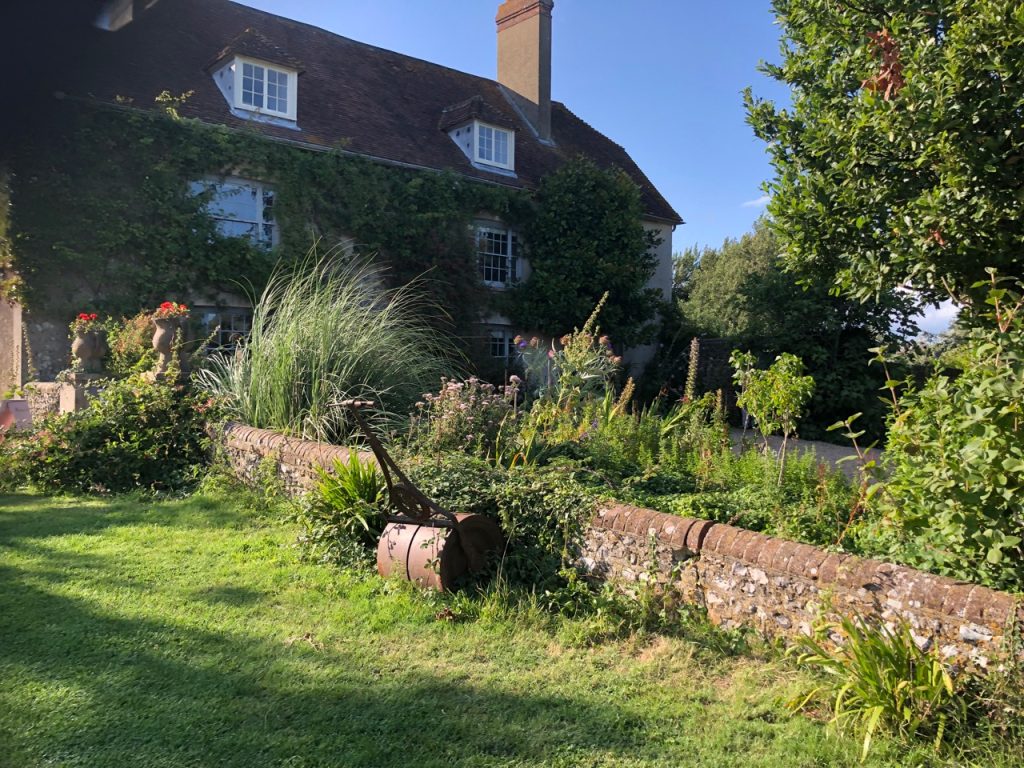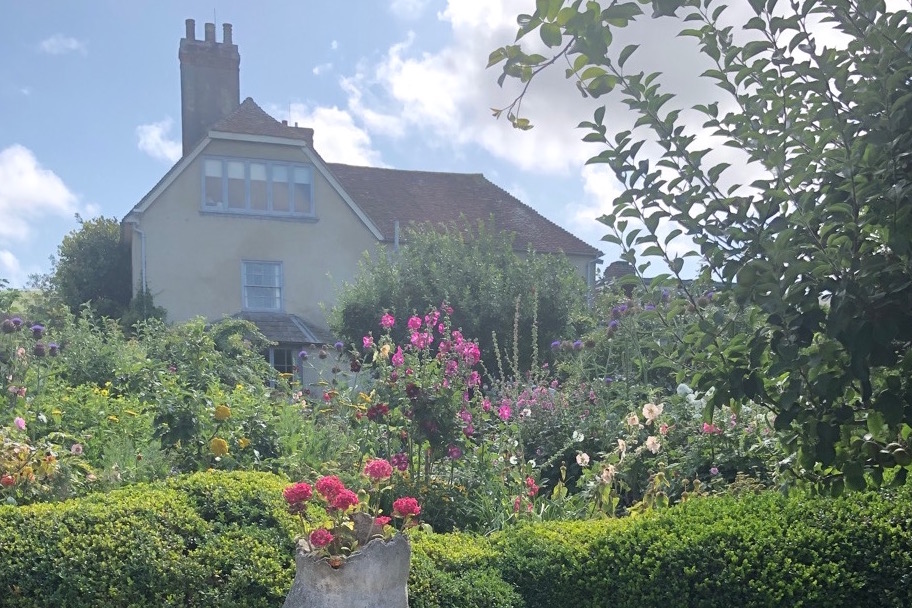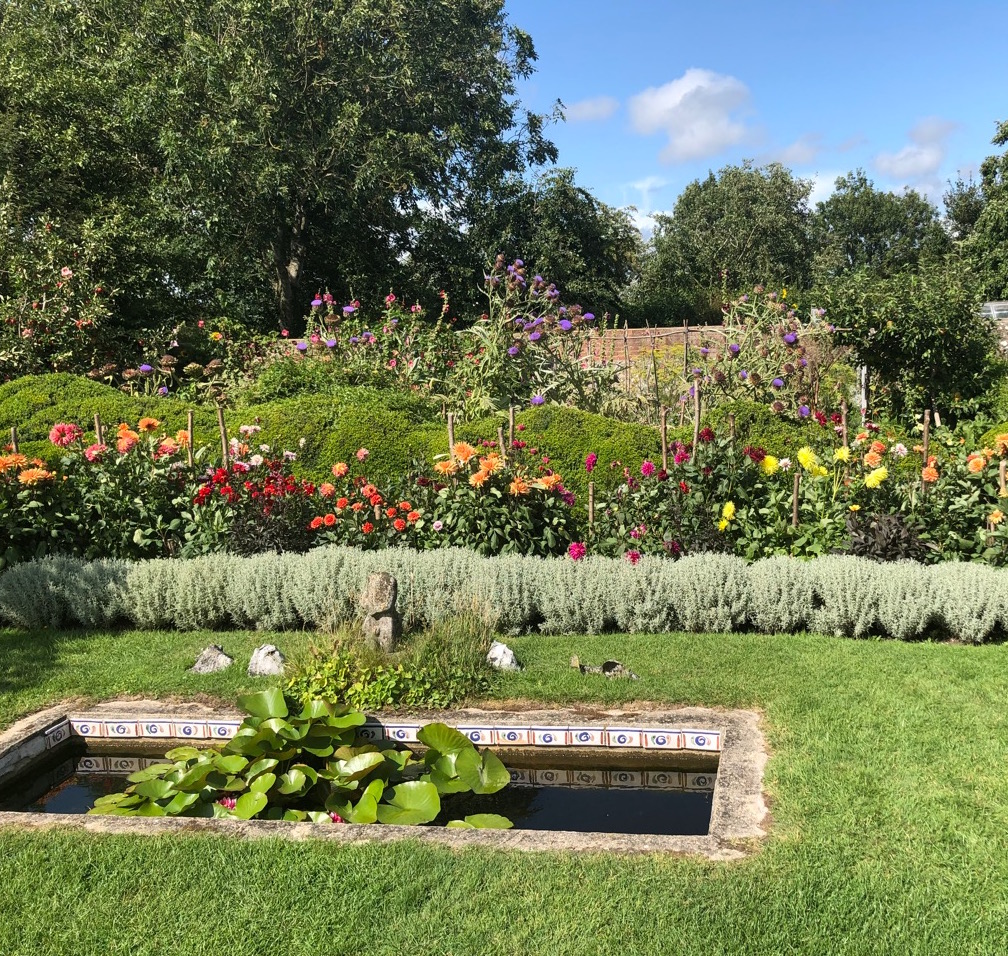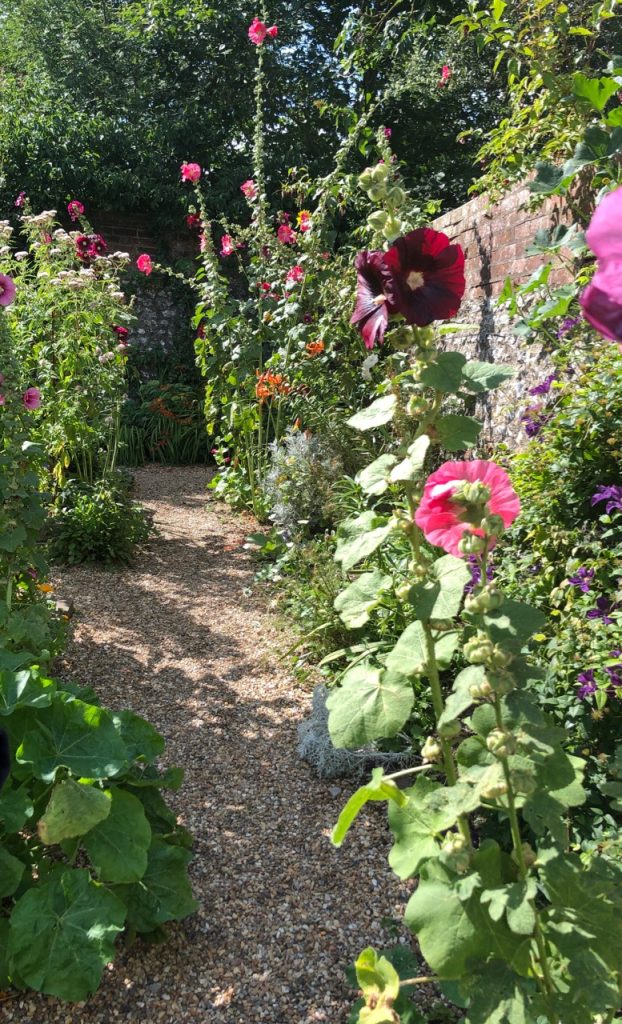Charleston farmhouse in East Sussex enjoys a central place in the cultural and artistic history of the twentieth century. It was the home of leading figures of what was known as the Bloomsbury Group. This group of artists and intellectuals challenged the conventional thinking that stifled early twentieth century Britain.
When the first world war broke out leading artist Duncan Grant and his lover David Garnett became conscientious objectors. They avoided the draft by volunteering to do farm work in Sussex. Charleston was the farmhouse they rented.
The plots get a bit messy… Grant moved there with Vanessa Bell and her two children. She was married to Clive Bell but loved Grant. Grant was with Garnett although this didn’t stop him having a child with Vanessa who Clive Bell agreed to bring up as his own daughter.
Vanessa’s sister Virginia (the writer Virginia Woolf) lived nearby. The economist John Maynard Keynes also stayed at Charleston and was a former lover of Grant’s. He helped fund Charleston for a while before marrying a Russian ballerina and moving nearby.
The personal backstory of Charleston seems more complex than an EastEnders plot, but despite the constant twists and turns of the central characters’ storylines, the house itself stands testamount to Bell’s and Grant’s artistic expression.
Walking around the house (you can only do guided walks except on Sundays when you can walk around unaccompanied), you are struck by two things. First, it’s very intimate… it really is not that big. And second that Bell and Grant lived and breathed for their art. There’re signs of post expressionism everywhere… there are frescos they painted over fireplaces. Walls and furniture are decorated with patterns and fabrics they created (which still seem contemporary today), pictures on the wall and lightshades that they made themselves.
If nothing else, you really do get the sense that at Charleston there was an explosion of artistic expression.
And then there’s the garden. This was created by another Bloomsbury artist, Roger Fry. It has all the classic features of a cottage garden… large impressive borders centred with a lawn, but there are pathways and statues that remind you of the artists’ presence everywhere.
Charleston does make you think. Nowadays you expect artists to live a bohemian life and challenge cultural norms. But it wasn’t always that way. In fact, you could argue that the Bloomsbury Set were the first group of artists to do this. They were trailblazers and it’s because of them that subsequent groups of artists have been able to express and explore themselves so freely.
In that sense, Charleston and the Bloomsbury group had such a big effect and influence on cultural life in twentieth century Britain.
It’s worth a visit… and the cafe and gallery aren’t bad either.




